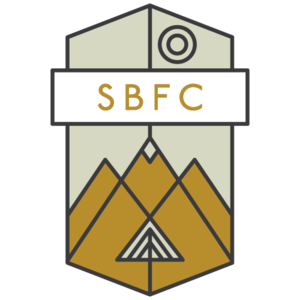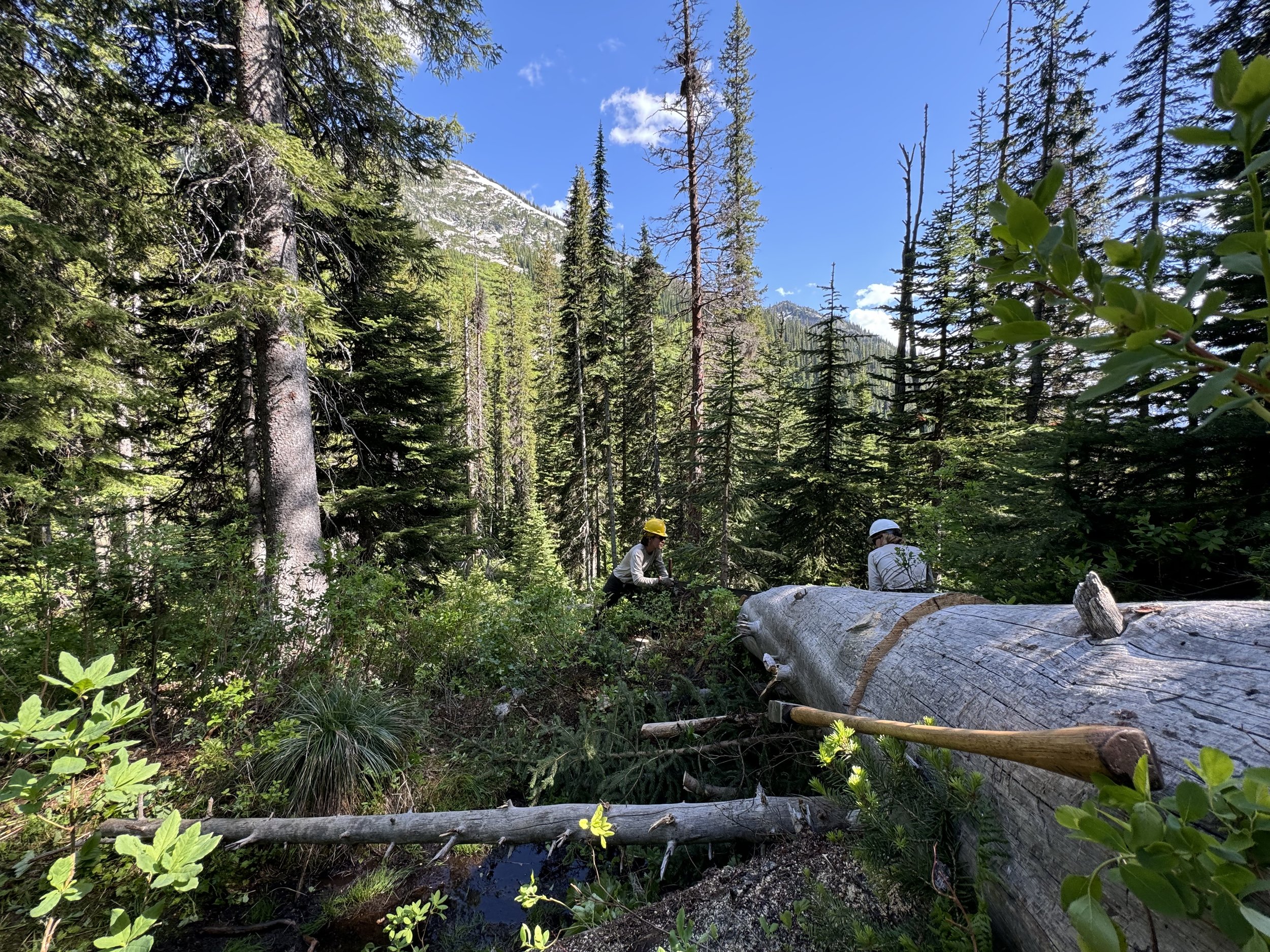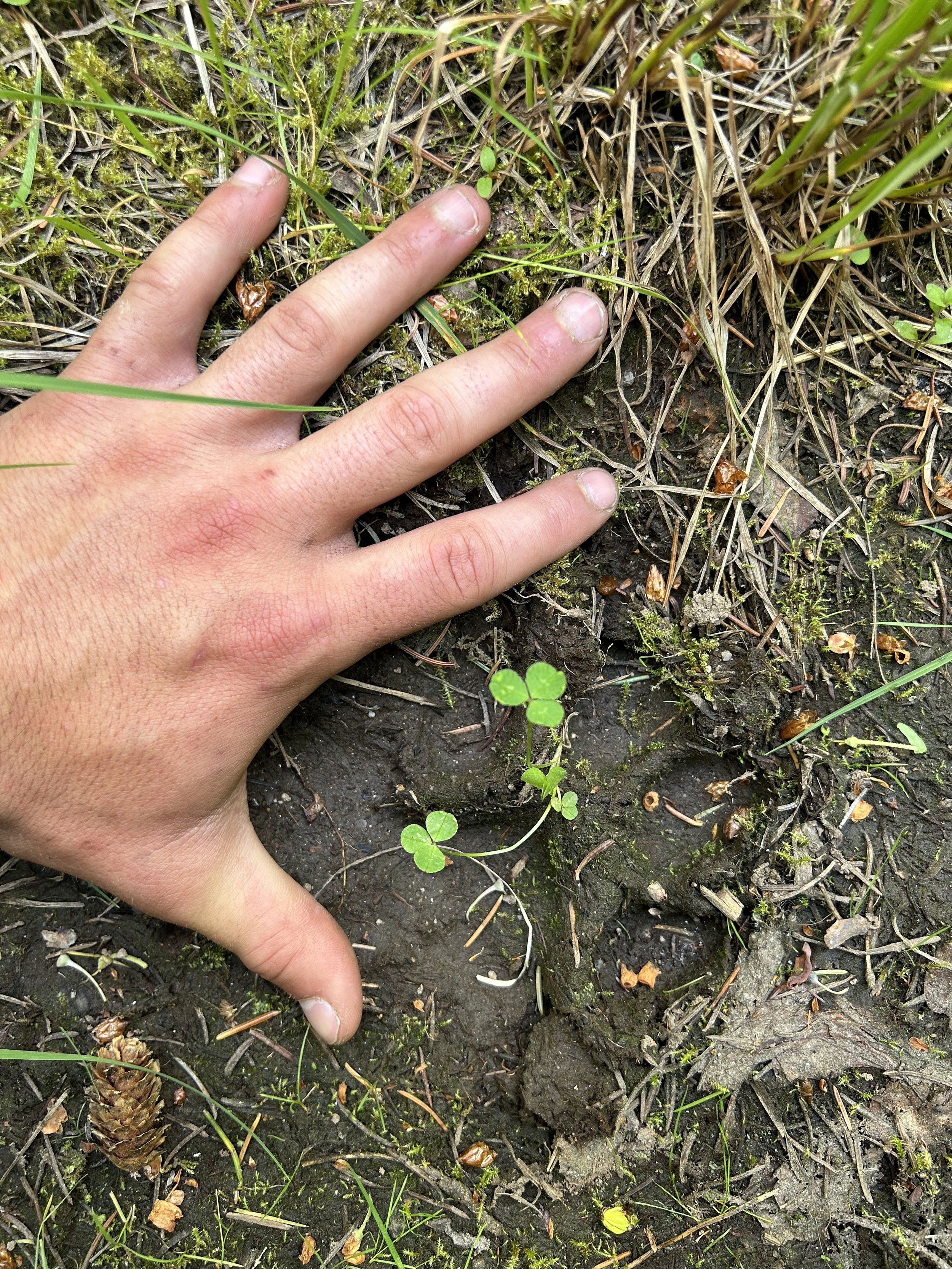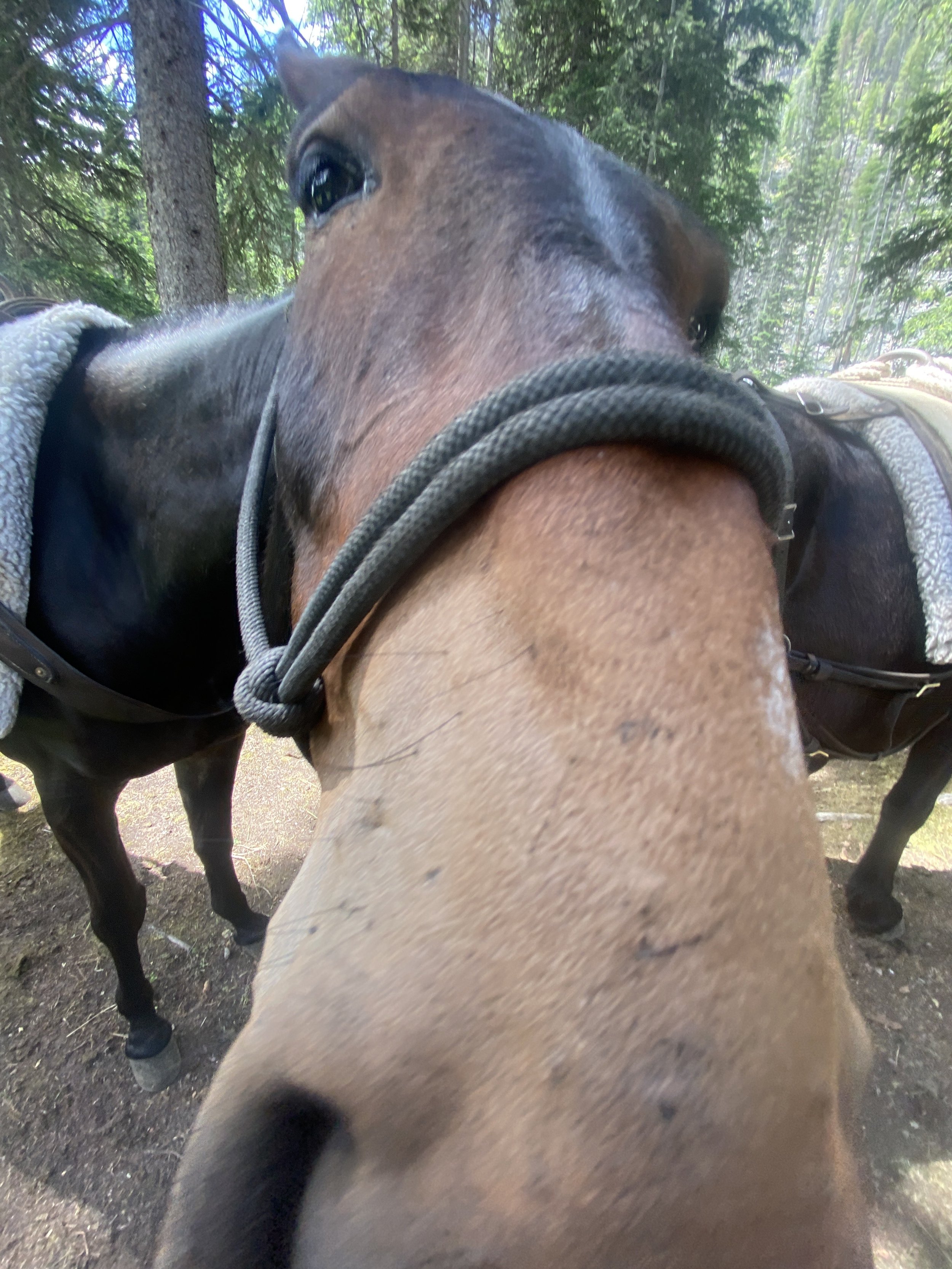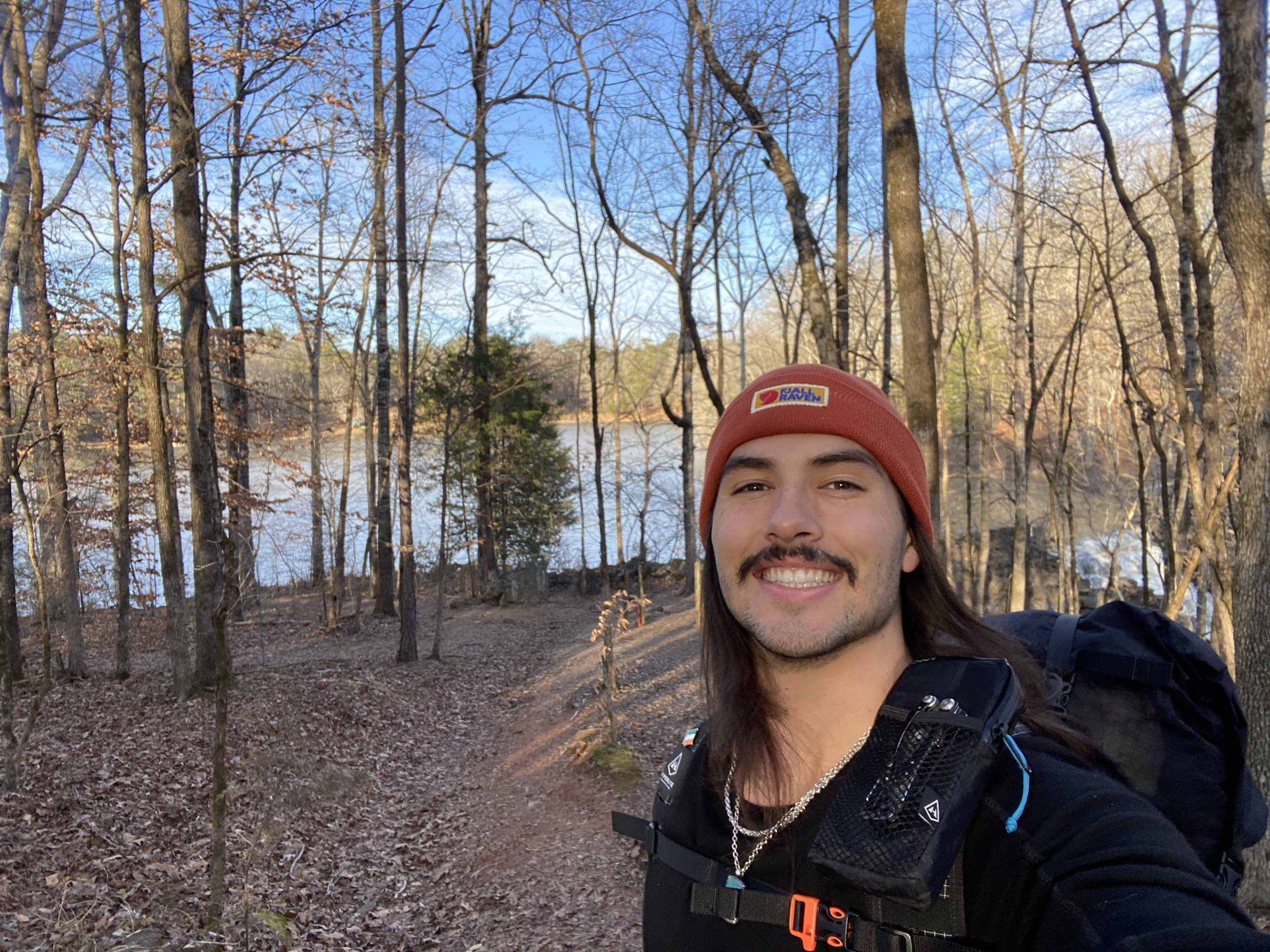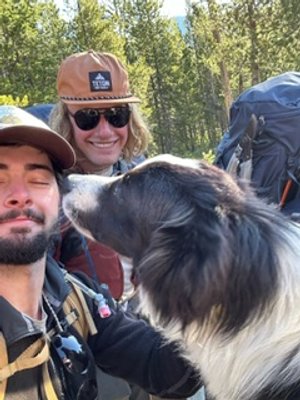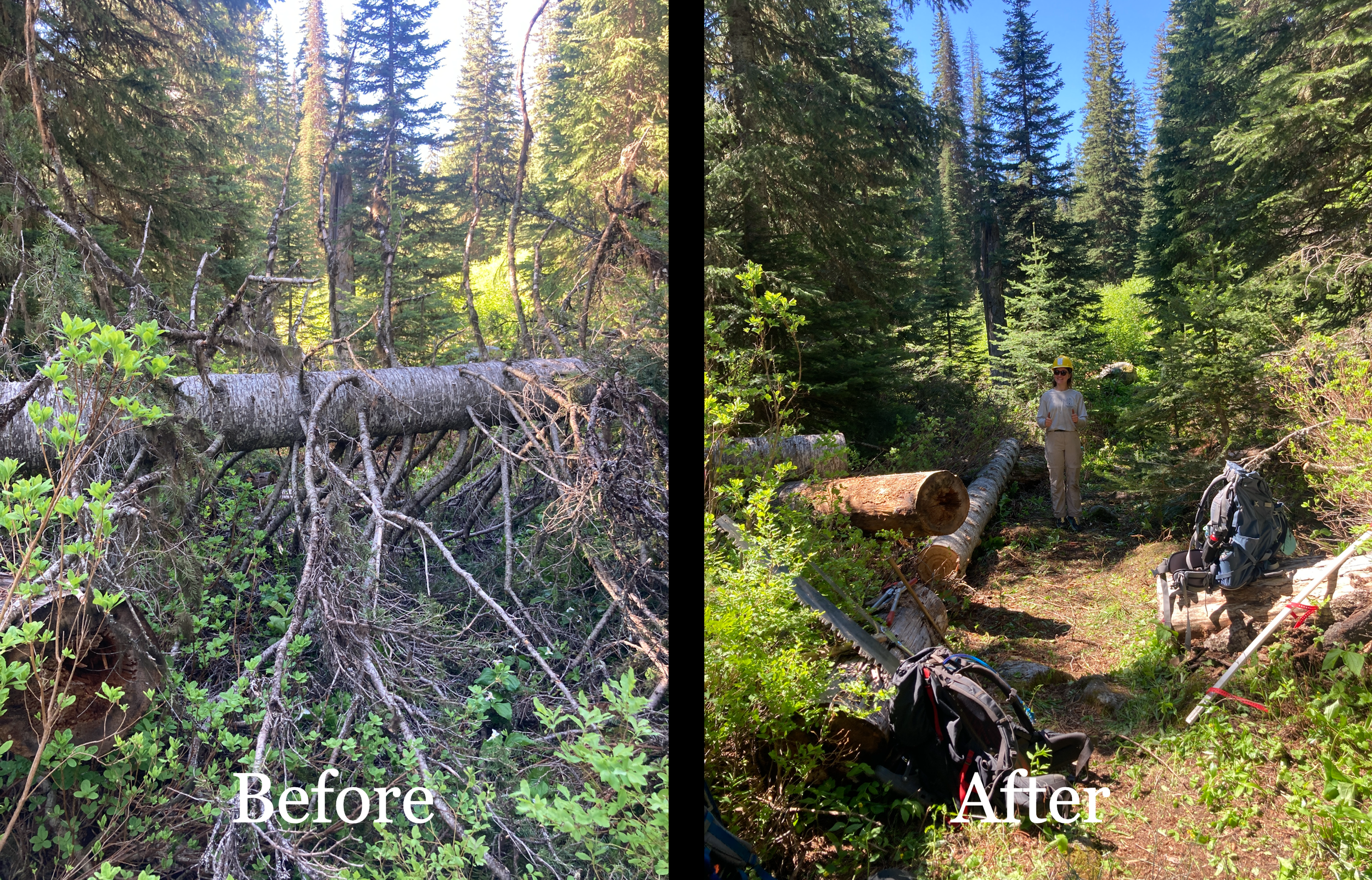Nathan Grooms
East Mayfield Creek
Salmon-Challis National Forest | Frank Church-River of No Return Wilderness
July 17-24, 2024
Day 1
Spend enough time in the wilderness – any wilderness, and one emerges with the impression that the land itself has amnesia. The trails are poorly maintained. In places, it feels as though the forests and grasses are actively attempting to swallow the trails, signs and every other trace of human presence. Leave a place like this alone for a few years, one thinks, and it would be as if no human ever walked here at all. In a way, this is the reason I am so drawn to wilderness in all its forms. The direct interaction with the land – hiking, climbing, sweating and stumbling. Wilderness makes you work for every mile and punishes weaknesses and mistakes harshly. No hitch this summer drove this point home like the Mayfield Creek trip in the Salmon-Challis National Forest.
The truck carried us to the trailhead, below rugged bleached rock and tall golden ponderosas. With heavy packs and the smell of hot pine sap in the air we began our trek into the wilderness.
Day 2
The Oxbow
The creek flows gently around its oxbow. The bottom, scoured deep on the outside bank, is painted in moving lights and shadows, revealing only a distorted hint of the orange stones along its bed. The dark, almost purple sand on the inside bank glitters as the cloudless afternoon sun picks out bits of mica – fool’s gold. Strands of grass trail in the water like lazy fingers, as the wind stirs the grass into an airy rustling sea. Small purple flowers play host to bees in the afternoon sun. Beyond, the burned forest, though dead, is alive with the song of birds and the chittering of squirrels. Fibers of moving water and current braid the surface, the latticework of time and erosion.
By the end of day two, we had established camp near a creek, in a meadow of Indian paintbrushes and wildflowers, and scouted ahead to Trapper Creek. A small, nearly dry rivulet choked by pink fireweed and purple mountain thistles. The water was muddy and shallow enough for algae to bloom on the rocks. Small, but the only water to be found for at least 2 miles in either direction. With the pass looming above us and the heat crushing and in the low 90s, we turned around. To this point, we had cut perhaps 5 trees, and all of us were lulled unconsciously into a sense that this hitch would be somehow easier. Perhaps, each person thought to themselves, we will find the whole trail clear, or nearly so. I think it was these first two days of (comparatively) light work that set the group up for the shock of the next day.
Day 3
The Saddle
The ridgeline is quiet. Tufts of dry, pale wheatgrass hold on to the sandy soil, but only loosely, as if their strength too is almost gone. A tangle of bleached pines, long dead, betray the slope of the hillside. Their bases are eroded by flame and heat into jagged, almost mineral shapes armored in scales of black carbon. Below, far below, bone-colored hills covered in the corpses of thousands of pines give way in the middle distance to blue hills with bases of red rock, almost vanishing in the summer haze. Dry creek beds scar the opposite hillsides, like empty veins. At their confluence, Trapper Creek itself is almost dry. The landscape gives the impression of being dead, or nearly so. Yet life here is persistent. It clings tightly with long roots like hairs, or hides away in bleached seed cones, waiting for the right moment. Fast moving thunder clouds cast shifting shadows on the valley. Even now, the wheel is turning again. Nothing stays still for very long here.
The third day of hitch, Friday dawned warm and clear, a sure sign of heat to come. The camp by the creek was packed away into four bulky loads and our group set off for the pass. Our goal was simple: make it over the pass where our maps assured us we would encounter a creek and flat areas for camping, as well as make it out of the burned area into healthy forest. Though we had map data and satellite images of the other side of the pass, we had no specific information about what to expect. In other words, we were now truly heading into unknown territory, at least from a trail work standpoint. We were to be both scouts and workers. We filled our bottles at Trapper Creek and began the slow ascent up the pass in the early midday heat. About halfway up the pass we hit a dilemma. The trail, which had been clear and visible, disappeared into clumps of scattered grass, sandy soil, and dead pines. Not so much as a footprint marked which way we were meant to go. The rest of the climb revealed no trail, nor could we find it on the other side of the pass from the saddle. The bushwack down the other side was so uncertain and unstable for footing that by the end, each of us were sweating, cursing, and stumbling every other step. The person in front of me took a step, had the hillside slide out below them, managed to catch themselves and jerk themselves upright, fighting their heavy pack and the Pulaskis and saws strapped to it, then resumed. I took a step a few minutes later, and fell, barely managing to keep ahold of the 100-year-old crosscut saw in my hands. As I tried to get up, a horsefly landed on my forearm and bit, drawing blood. I swatted it, and the force of the swat caused more of the sand to give way, putting me back on the ground. And so it went. By the time the trail resumed at the base of the pass, there was probably not more than 2 liters of water to be had between every member of the group. The creek was dry. Frantic struggling up the dry bed ensued, and eventually the remains of the water were discovered and our water situation resolved itself. However at this point it was late and no promising sites had revealed themselves for camp. We eventually settled on a not too steep hillside, pitching our tents on the flattest portions we could find, each person slid and scooted each time they rolled over in their bag. Myself, I rolled over and my tent itself pulled its stakes and slid down the hill. I had to walk back up the slope to where my boots were the next morning.
Day 4
The Cabin
Tall grand firs stand sentinel in the clearing, throwing a quilt of sunlight and shade across the hunched roof and low log walls. The cabin lies deep in the forest, in shade and surrounded by bright tufts of orange Indian paintbrushes. The door hangs sadly open, crooked on its hinges and covered in pale green moss. Human debris litter the clearing, each like a single line from a book no one has ever read. A rusted door for a wood stove, the dented stovepipe lies in pieces nearby. A tin washpot, twisted by time into an alien and nonfunctional shape. A faded shelf, made of scrap crates, the word “Minneapolis” part of some logo or label is the only thing still legible. My eyes are drawn continuously back to that splintered roofbeam. It is collapsed under the weight of a massive fallen fir tree, forming a disheartened V shape. Like a broken spine. Like a broken dream. Who built this? Where did they go? Why did they leave? The pines seem to whisper in the soft summer-morning breeze. They say, “You are all only visitors here. You do not remain”.
So, the first two days had lulled us, and the Frank Church had reasserted itself in dramatic form on the third. Now the work began in earnest, but with the work we also searched for a decent campsite, all of us agreeing that the previous night could not be repeated. Scouting down the trail revealed the scope of what we were in for. Over 500 trees down in about a mile and a half of trail. We also found several prospective campsites, and one abandoned fur cabin deep in the woods. We settled on a flat clearing at the base of a boulder field below the trail. That done, cutting began, first the smaller “easier” trees, then the larger. At the end of the day we were joined by Josh and our morale had begun to recover from the previous day, though none of us wanted to even consider the hike back up the pass.
Day 5
The Rock Field
Grey boulders lie tumbled along the slope, broken and covered in green moss. The sun is going down red like blood, filtering through the peach-haze of wildfire smoke and staining the western aspects of each rock and stone with faint orange tint. At the same time, purple shadows slink out of each crease and hole, slowly bleeding onto more and more surfaces. Juniper clings to the steep, sandy slope between the larger rocks, green and blue and brown. Birds call from the trees high above on the hill. A pika calls its shrill warning from a flat rock, while another darts between two boulders, its mouth full of grasses for its nest. Cold air settles like a familiar blanket into the low places of the valley, pooling and piling on itself after the crushing heat of the afternoon. Night will fall soon.
A long hot day, but each member of the group was in silent agreement that work was better than what we had done for the past few days, and we put ourselves to the task as if trying to distract from the intimidating thought of returning over the sandy pass. We quickly made the decision that since the number of trees was so large, we would leave trees lying flat on the ground. The “step over” trees were limbed to reduce tripping hazards and the others were cut, either with hand saws or the two massive cross cuts we carried with us over the pass. The valley rang with the sounds of thrumming saws and the sharp crack of the axe as wedges were driven into place. From my position ahead of the group with my hand saw, I could always tell where the main group was. Just listen for the song of the saw. At the end of the day, we had cut to just below the switchbacks up the pass. Or at least, where the map said the switchbacks were.
Day 6
The Burn
The heat comes down in waves. The sort of heat that always comes with a cloudless bluebird July afternoon. The type of heat that makes you want to just lie down and die, movement in any form becoming an effort. Black earth, crunchy with silica and seeming to absorb the heat of the relentless sun, puffs dust underfoot. Where once shade trees would have broken the sun up, now only bleached white skeletons remain. Burned husks, their pointed tips like so many accusatory fingers, pointed at the heavens which brought down the force that snuffed out their lives. Their scorched cones, long sterilized, hang on the branches high up, like weird alien fruit withering on the vine. The birds chip softly to each other from trunks hollowed by time and fire. Far distant, a woodpeckers rattle echoes across the meadow. The wind blows, bringing the smell of flower and fireweed. These things remain after the trees have gone.
Cutting up the pass was a daunting concept for all of us, but the trail had to be cleared, so we set off and began the task of clearing the switchbacks. The trees here were more burled and twisted, catching the teeth of the saws and binding up rather than cutting clean, but one by one they gave way anyway. One particularly nasty pileup, the result of a rockslide at some point took us almost an hour to clear. By the time the saddle was in view, the group had gotten over its trepidation about the pass, and amidst gentle cool mountain rain we ate our lunch on the saddle above the red rocks and the burned forests. By the end of the afternoon, our path up and down the saddle was clear of trees and we returned to our rock field, eager to be over the pass and on our way home the next day.
Day 7
We paused several times on our way up the switchbacks to scrape out parts of the trail which were particularly washed out. At the saddle, we regrouped and decided we wanted to push all the way to the trailhead in order to save a hike out the next morning. The rest of the day was spent reaching the trailhead, each of us exhausted by the week and happy to be done.
Day 8
The Mayfield Creek hitch was a long and exhausting ordeal. At various points I questioned why I was even there. However, the overall feeling I came away with was not disappointment but rather excitement. We had succeeded in very strenuous circumstances and cleared a good portion of the trail. The wilderness had made us work for every step, and we had risen to the challenge.
Funds for this hitch were provided through the Secure Rural Schools Act and the Central Idaho Resource Advisory Committee, and private SBFC members/donors.
Oregon, WI
University of Wisconsin Platteville- Environmental Science & Conservation
Nathan is a senior majoring in Environmental Science and Conservation at UW-Platteville. Nathan grew up around the Madison area in Wisconsin, hiking and camping. Nathan worked three seasons in the Boundary Waters, a national Wilderness in Minnesota where he gained experience working in remote areas and developed a love of nature.
